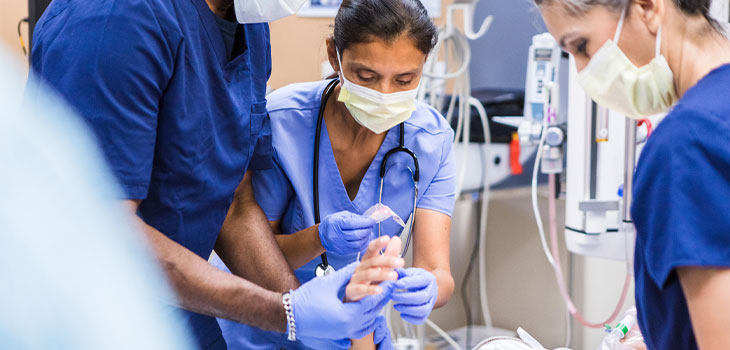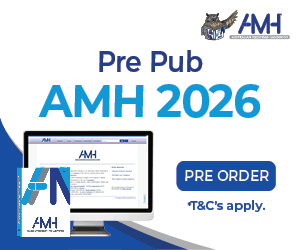The successful rollout of an emergency nursing system is showing significant improvement in patient deterioration, with plans for global expansion.
The nursing system, developed at the University of Sydney, is helping to save lives in emergency departments, setting a new national standard for nursing care since its rollout in 2020.
Trialled in 29 emergency departments across NSW and Victoria over three years and involving more than 100,000 patients and 1,300 nurses, the system is estimated to prevent deterioration in more than 5,400 patients if scaled across all emergency departments nationally.
Known as HIRAID® – which stands for History, Infection risk, Red Flags, Assessment Interventions, Diagnostics, Reassessment and communication – the seven-step nursing framework for emergency department patients provides nurses with a structured approach to assess and manage patients after triage.
The trial demonstrated:
- a 7.4% drop in rapid response calls – meaning fewer patients’ condition deteriorated;
- a more than 8% improvement in early intervention for complex cases, and;
- ongoing use across all participating hospitals, three years after the trial ended.
“We estimate the framework will help prevent deterioration in more than 5,400 patients when upscaled to all emergency departments nationally,” said lead researcher Professor Kate Curtis from the Susan Wakil School of Nursing and Midwifery.
The framework gives nurses a clear, evidence-based process to act fast. “We’re seeing improved assessment skills, earlier recognition of patient deterioration, and the confidence to escalate concerns immediately and effectively, all of which help prevent catastrophic events,” said Professor Curtis.
The team now has plans to take the system globally, with a recent rollout in Thailand and further implementation planned in Sweden, South Africa, Saudi Arabia, and Denmark.
HIRAID® was piloted in the Illawarra, with this study focusing on Southern NSW, Northern NSW, Western Sydney and Eastern Health in Victoria. It has now been deployed across 160 emergency departments across NSW, Victoria, South Australia and Tasmania, and works in partnership with Australian Commission on Safety and Quality in Health Care, Commonwealth Chief Nurse, Australian College Nursing, College Emergency Nursing Australasia, Deakin University and the NSW Agency for Clinical Innovation.
Early detection and intervention
By improving nurses’ ability to recognise early warning signs and intervene sooner, HIRAID® prevents patients from deteriorating in the first place.
Westmead Hospital’s Professor Margaret Murphy said it had resulted in better patient outcomes, more confident nurses and stronger communication.
“HIRAID® helps us teach emergency nurses how to approach any undifferentiated patient, assessing and identifying what’s critical in every presentation. It breaks down what an experienced emergency nurse can do, capturing the essential elements of how to assess and manage any patient presenting to an emergency department.
“While the patients may appear the same, it’s how the nurse learns to take a patient’s history, how to recognize red flags and responds to that information that is critical to safe patient care. Using HIRAID®, we can identify red flags early in undifferentiated presentations, something that’s easily missed with an ad hoc approach.”
More than 2,500 patients and carers also reported clearer communication and a better understanding of their care.
Recognised as a potential national standard in emergency nursing, HIRAID® is now being trialled in aged care and other hospital settings, with the potential to become a global model for patient safety.
Reference:
Curtis, K et al, Reducing inpatient deterioration and improving patient safety in emergency departments with a standardised nursing framework: A stepped-wedge cluster randomised controlled trial, (International Journal of Nursing Studies).DOI:10.1016/j.ijnurstu.2025.105256









One Response
We have just started using this in our ED . Is very simple to use and effective